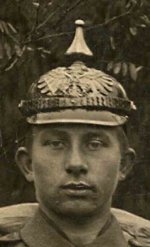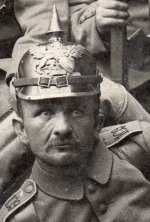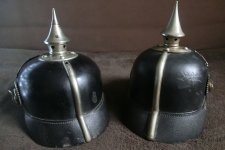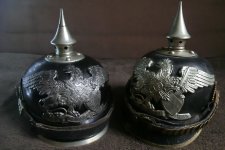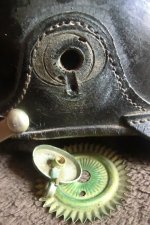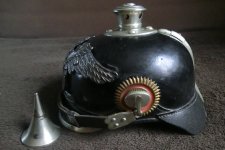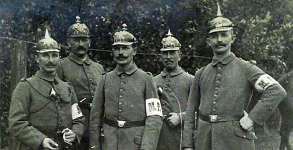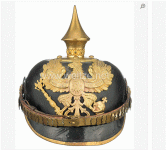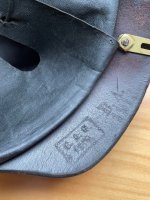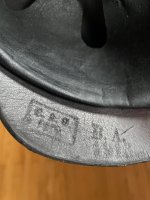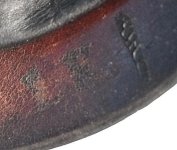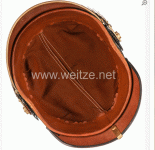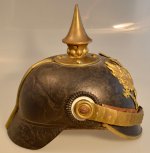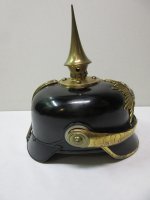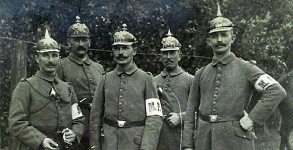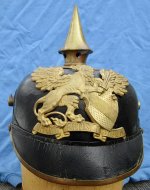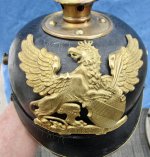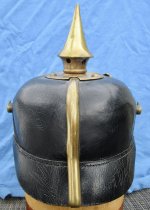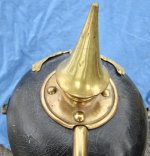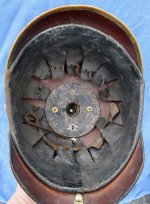CLOVIS 57
Well-known member
Another possibility remains to explain the non "regulatory" fittings on this "Kammer" helmet, therefore belonging and distributed by the army since regimented (which Eigentum helmet never has):
Indeed, during mobilization, it was necessary to equip a hundred "new regiments" and "Reserve and Landwehr regiments", and the shortage of equipment was offset by the "Ersatz", whose "funds of drawers" (helmets of police, firefighter, transformed to point etc...) and the reuse of old models remained in reserve.
Infra, to illustrate my words, a photo of a Schutzgrenze or Zollbeamte mobilized with his administrative helmet, and another photo of a Reservist of 109 RJR Badois, with an old M71 helmet, or at least with the old M67 tip at Perlring -troop.
Indeed, during mobilization, it was necessary to equip a hundred "new regiments" and "Reserve and Landwehr regiments", and the shortage of equipment was offset by the "Ersatz", whose "funds of drawers" (helmets of police, firefighter, transformed to point etc...) and the reuse of old models remained in reserve.
Infra, to illustrate my words, a photo of a Schutzgrenze or Zollbeamte mobilized with his administrative helmet, and another photo of a Reservist of 109 RJR Badois, with an old M71 helmet, or at least with the old M67 tip at Perlring -troop.

